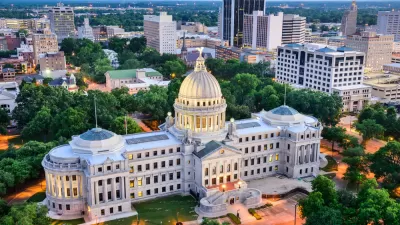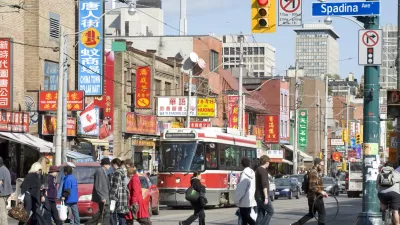Recent figures from the 2010 U.S. Census highlighted the fact that many cities remain racially segregated. This commentary argues that this situation is unlikely to change.
Earl Ofari Hutchinson writes that trends of whites fleeing for the suburbs and urban centers increasing in minority populations have been going on for decades and that they will continue.
"A casual drive through any of the major urban neighborhoods in America, a walk through the neighborhood schools, hospitals, and clinics reveal the stark pattern of the two Americas. In fact, even three or four urban Americas: an America that is poor, black and Latino; an America that is black and middle class; an America that is white, working class and middle class; and one that's white and wealthy.
But whichever urban America one travels through, the line dividing the neighborhoods is as deep as the Grand Canyon. There are the usual suspects to blame for the rigid segregation. Poverty, crime, lender redlining, a decaying industrial and manufacturing inner city, white and middle-class black and Hispanic flight, crumbling inner-city schools, the refusal of major business and financial institutions to locate in minority neighborhoods, and cash-strapped city governments that have thrown in the towel on providing street repairs and basic services."
FULL STORY: America’s Most Segregated Cities Likely to Stay That Way

Montreal Mall to Become 6,000 Housing Units
Place Versailles will be transformed into a mixed-use complex over the next 25 years.

Planetizen Federal Action Tracker
A weekly monitor of how Trump’s orders and actions are impacting planners and planning in America.

DARTSpace Platform Streamlines Dallas TOD Application Process
The Dallas transit agency hopes a shorter permitting timeline will boost transit-oriented development around rail stations.

Dead End: Nine Highways Ready for Retirement
The Freeways Without Futures report describes the nation’s most promising highway removal proposals.

Congressman Proposes Bill to Rename DC Metro “Trump Train”
The Make Autorail Great Again Act would withhold federal funding to the system until the Washington Metropolitan Area Transit Authority (WMATA), rebrands as the Washington Metropolitan Authority for Greater Access (WMAGA).

Trump's “Able Bodied” Public Housing Limits Could Displace Over 300,000 New Yorkers
As part of 43% cut to federal rental assistance, Trump is proposing a two-year limit on public housing tenure for “able bodied adults.”
Urban Design for Planners 1: Software Tools
This six-course series explores essential urban design concepts using open source software and equips planners with the tools they need to participate fully in the urban design process.
Planning for Universal Design
Learn the tools for implementing Universal Design in planning regulations.
City of Mt Shasta
City of Camden Redevelopment Agency
City of Astoria
Transportation Research & Education Center (TREC) at Portland State University
City of Camden Redevelopment Agency
Municipality of Princeton (NJ)
Regional Transportation Commission of Southern Nevada





























